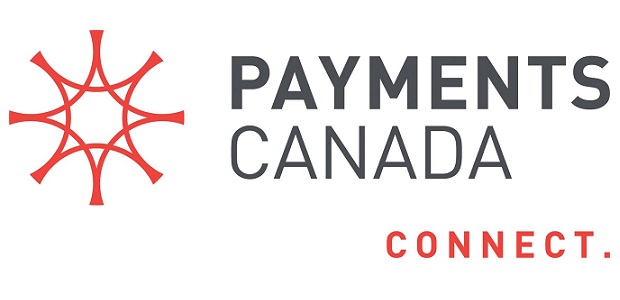Payments Canada releases detailed future view of Canadian payments

Payments Canada issued an in-depth view of the target end state for payment system modernization in Canada, including the infrastructure, rules and standards that will benefit Canadians and businesses from coast-to-coast. Following months of collaborative industry effort to define requirements and map future plans, Payments Canada has detailed the future state required to improve the way Canadians pay for goods and services, transfer money and exchange data about their payments.
The Modernization Target State (summary version) is the third publication in a series documenting Canada’s payments Modernization journey. The Vision for the Canadian Payments Ecosystem identified the needs in the Canadian marketplace – such as faster, safer and data rich payments – and the Roadmap & High-Level Plan outlined what the industry needed to do to begin to deliver on those needs.
“Modernizing our national payment system is not just a technology upgrade, it’s about working together as an industry to unlock potential and create value for Canadians,” said Gerry Gaetz, President & CEO of Payments Canada. “It’s our job – with tremendous commitment and investment from financial institutions, government and other payment service providers – to provide a platform for innovation that supports Canada’s competitiveness in the global economy.”
The Modernization Target State provides a detailed view of Canada’s Modernization program, including descriptions of core systems and their fundamental support structures, such as risk and regulatory requirements, access and settlement models, and technology platforms. Payments Canada has also outlined the way the systems will integrate, the potential migration of payment types and the anticipated benefits for Canadian businesses and households. Modernization involves an ambitious plan that will be refined and updated as key milestones are achieved.
The target state is underpinned by three new systems, which will operate under an enhanced risk, regulatory and rules framework that appropriately balances the need for safety and soundness with accessibility to spur innovation. Fundamental to each system is the introduction of the ISO 20022 payment messaging standard, which enables the flow of more data with payments:
Lynx – Lynx will replace the current Large Value Transfer System, a high value payment system that facilitates secure real-time payments with transaction finality and supports settlement of other payment networks and financial market infrastructures. Lynx will comply with the Bank of Canada’s risk-management standards for Systemically Important Payment Systems. This will provide a safe and secure foundation that supports a dynamic payments environment.
Retail clearing with enhanced batch payments (or SOE) – A new system will replace the existing Automated Clearing Settlement System and U.S. Bulk Exchange. The new system will clear retail batch payments and comply with the Bank of Canada’s risk management standards for Prominent Payment Systems. It will also enable faster and more convenient automated funds transfers – a payment type typically associated with payroll and bill payments.
Real-time Rail – This new, always-on payments infrastructure will support immediate payments. The real-time infrastructure will enable fast, convenient payments and funds transfers and will be a platform for future innovation, where participants in the payment system can connect and develop new and exciting ways for Canadians to pay for goods and services and transfer money.
While the industry mapped the Target State, work progressed on important short-term deliverables, including enhancements to Automated Funds Transfer. In the fall of 2018, a third daily exchange will be added and two-hour funds availability will come into effect. These changes will help financial institutions clear transactions faster and more frequently for their customers, enabling new features like same-day payroll, expedited bill payments, faster settlement of invoices, the move away from paper and cheques and more uniform service across the country in all time zones. Other key changes in 2018 include new processes for monitoring liquidity in the high-value payment system and operationalizing a new credit risk model and framework for the retail system to increase safety.
”These important changes to our national payments infrastructure are the result of extensive consultation and collaboration with financial institutions and key stakeholders, including the Bank of Canada. Building on the needs identified in Payments Canada’s Vision for the Payments Ecosystem and the Industry Roadmap and High-Level Plan, the Modernization Target State is the next step in delivering on the industry’s shared Vision: A modern payments system is fast, flexible and secure, promotes innovation and strengthens Canada’s competitive position.”, according to the press release.
The Modernization Target State is open for public consultation until February 23, 2018.
About Payments Canada:
Payments Canada ensures that financial transactions in Canada are carried out safely and securely each day. The organization underpins the Canadian financial system and economy by owning and operating Canada’s payment clearing and settlement infrastructure, including associated systems, bylaws, rules and standards. The value of payments cleared and settled by Payments Canada in 2016 was $50.8 trillion, or C$201.5 billion every business day. These encompass a wide range of payments made by Canadians and businesses involving inter-bank transactions, including those made with debit cards, pre-authorized debits, direct deposits, bill payments, wire payments and cheques.
Dariusz Mazurkiewicz – CEO at BLIK Polish Payment Standard
Banking 4.0 – „how was the experience for you”
„To be honest I think that Sinaia, your conference, is much better then Davos.”
Many more interesting quotes in the video below:









